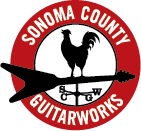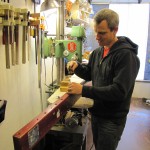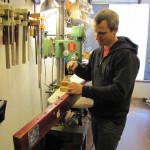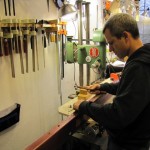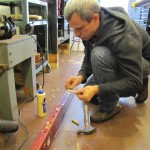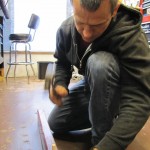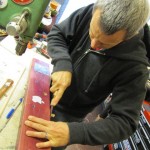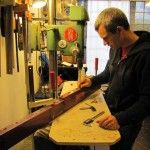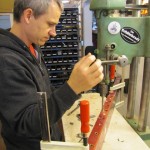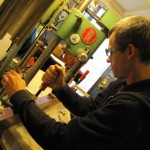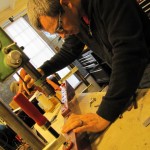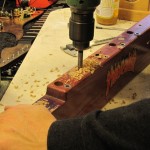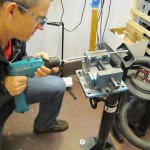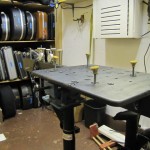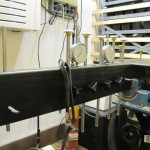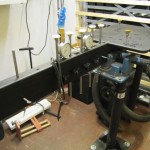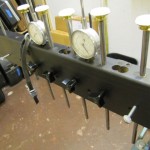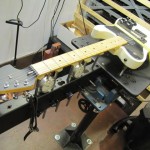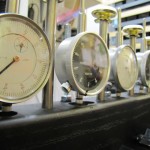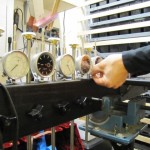Every fret job we do ends up on our trusty neck jig, affectionately nicknamed Fretty 5000. What the neck jig does is allow us to simulate string tension on the neck with the strings off, so we can accurately level frets under real world conditions. We set the guitar on the jig (or sometimes just the neck, using a surrogate body), strap it in, rotate the whole thing down to playing position, and then set the neck as dead straight as possible. Once the neck is straight, we zero out the dial indicators that are making contact with the bottom of the neck. Then we rotate the guitar to flat on it’s back, remove the strings, and then use a series of supports to raise the neck back to the point where the dial indicators are back at zero. This is sometimes a tedious process – it has to be exact, or else the fret level won’t come out perfect. Once we’ve got the dial indicators back to their original zero positions, it’s time to mow down some frets.
Fretty 5000 has served us well over since it was built in 2001. Over the years we’ve come up with a lot of ideas for improvements, and this week we put those ideas into action. Geoff got his hands dirty modifying Fretty: adding three more dial indicators, a whole slew of new supports, fixing up and replacing various components, and painting the whole thing jet black.
We’re currently experimenting with Fretty 5000, to make sure that our new modifications work the way we expect. If everything works out the way we hope, Fretty 5000 will be retired, to be replaced with the Fretty 6000 – utilizing all of our new upgrades, but made out of solid aluminum.


